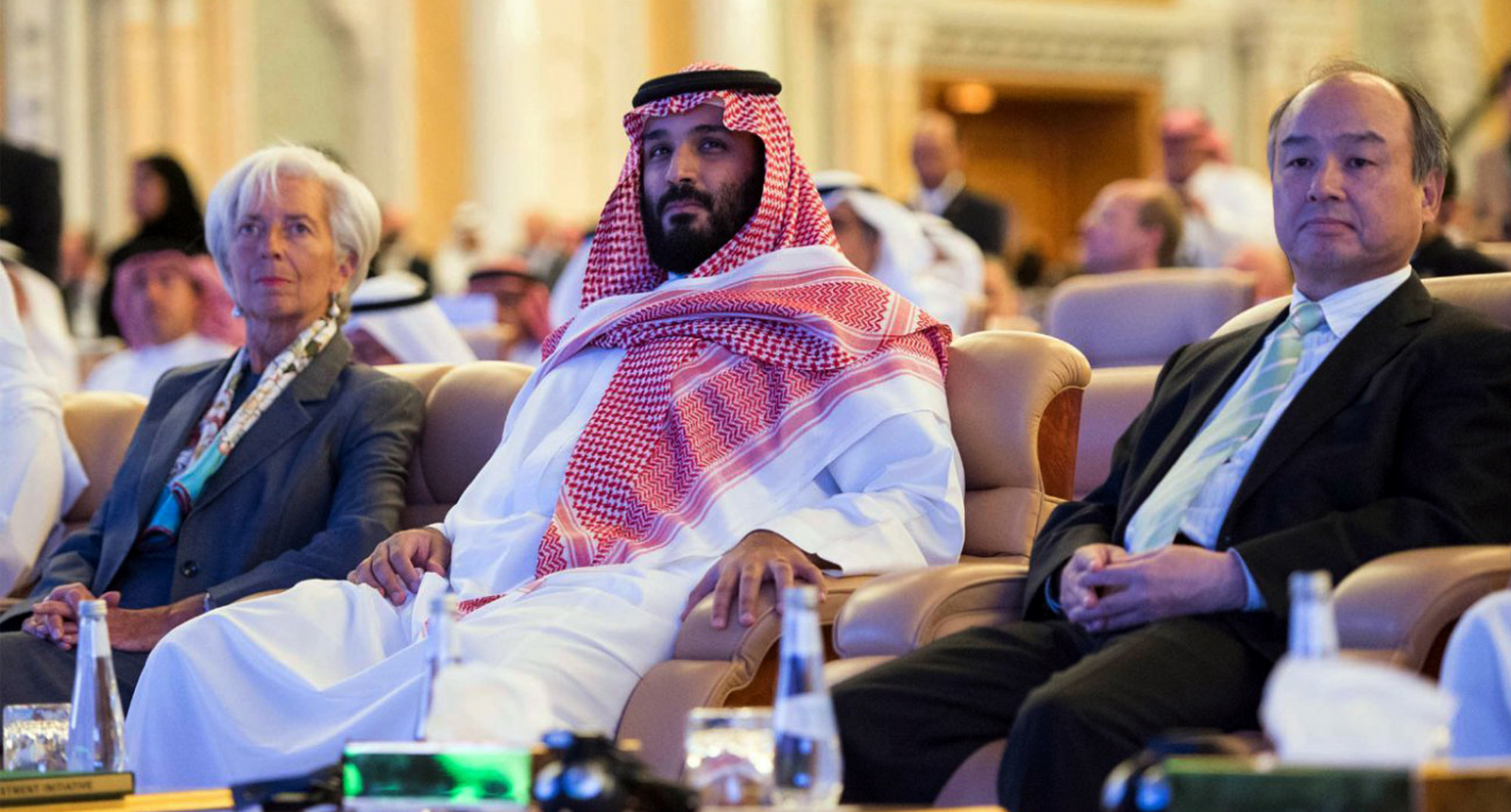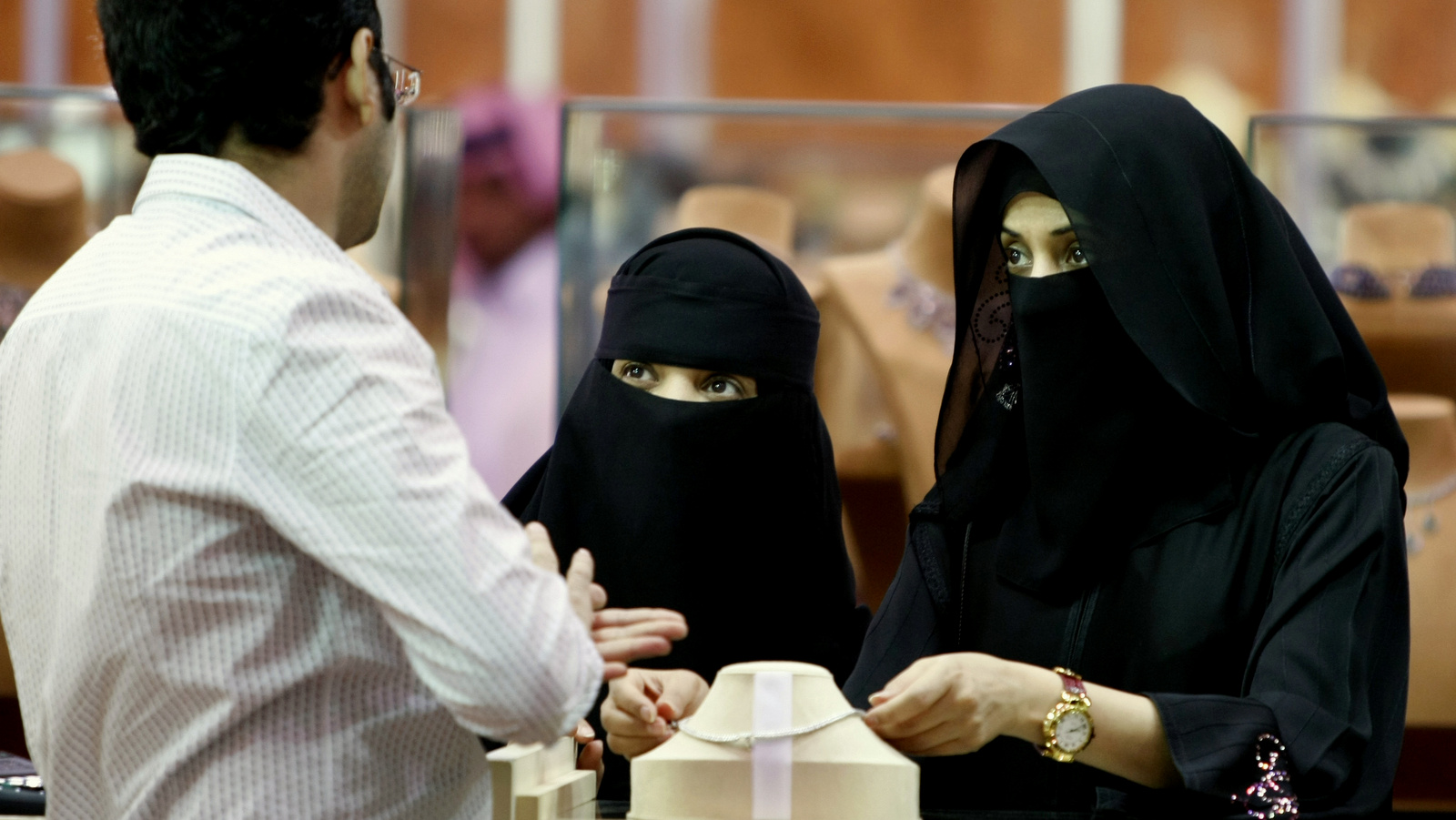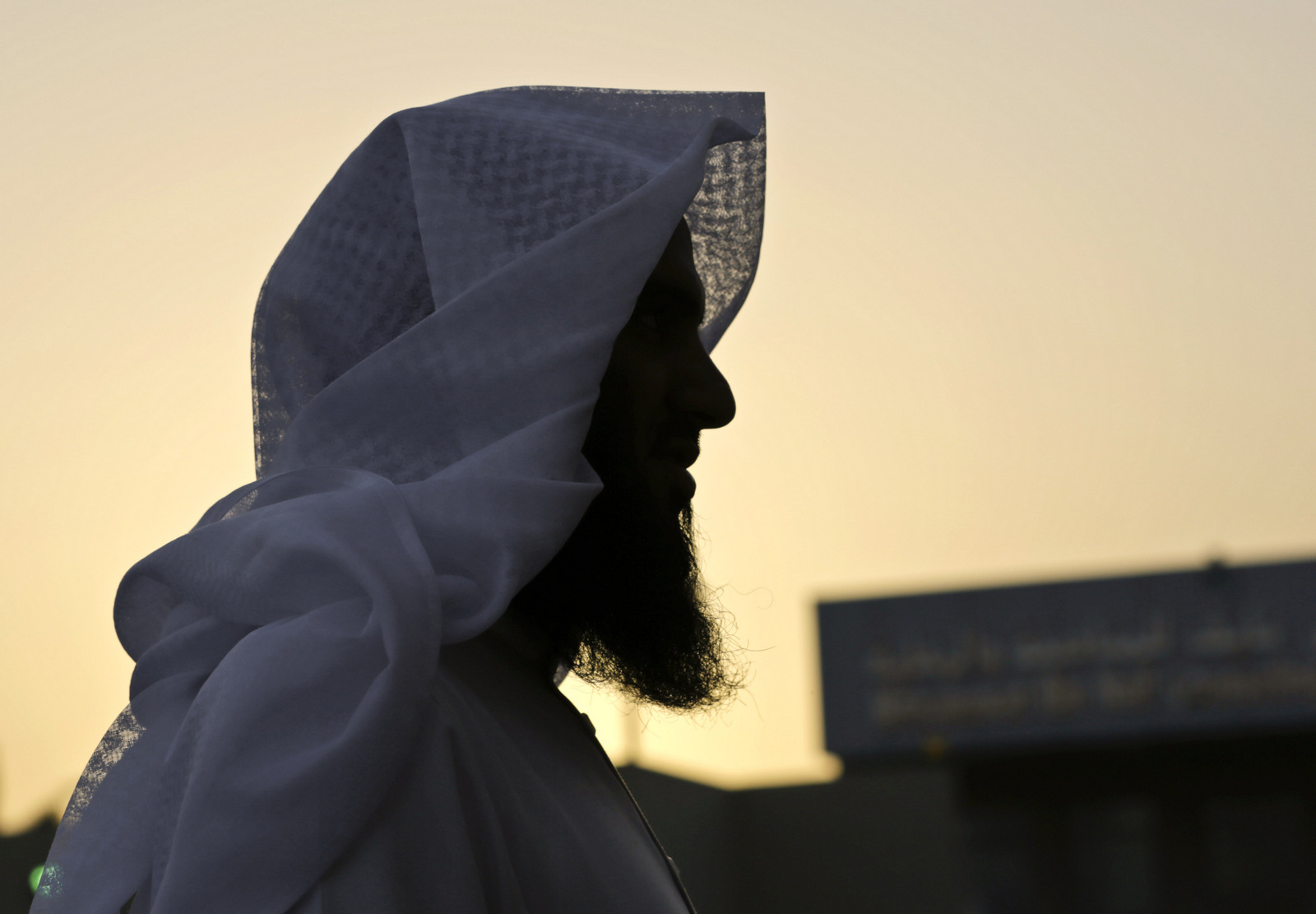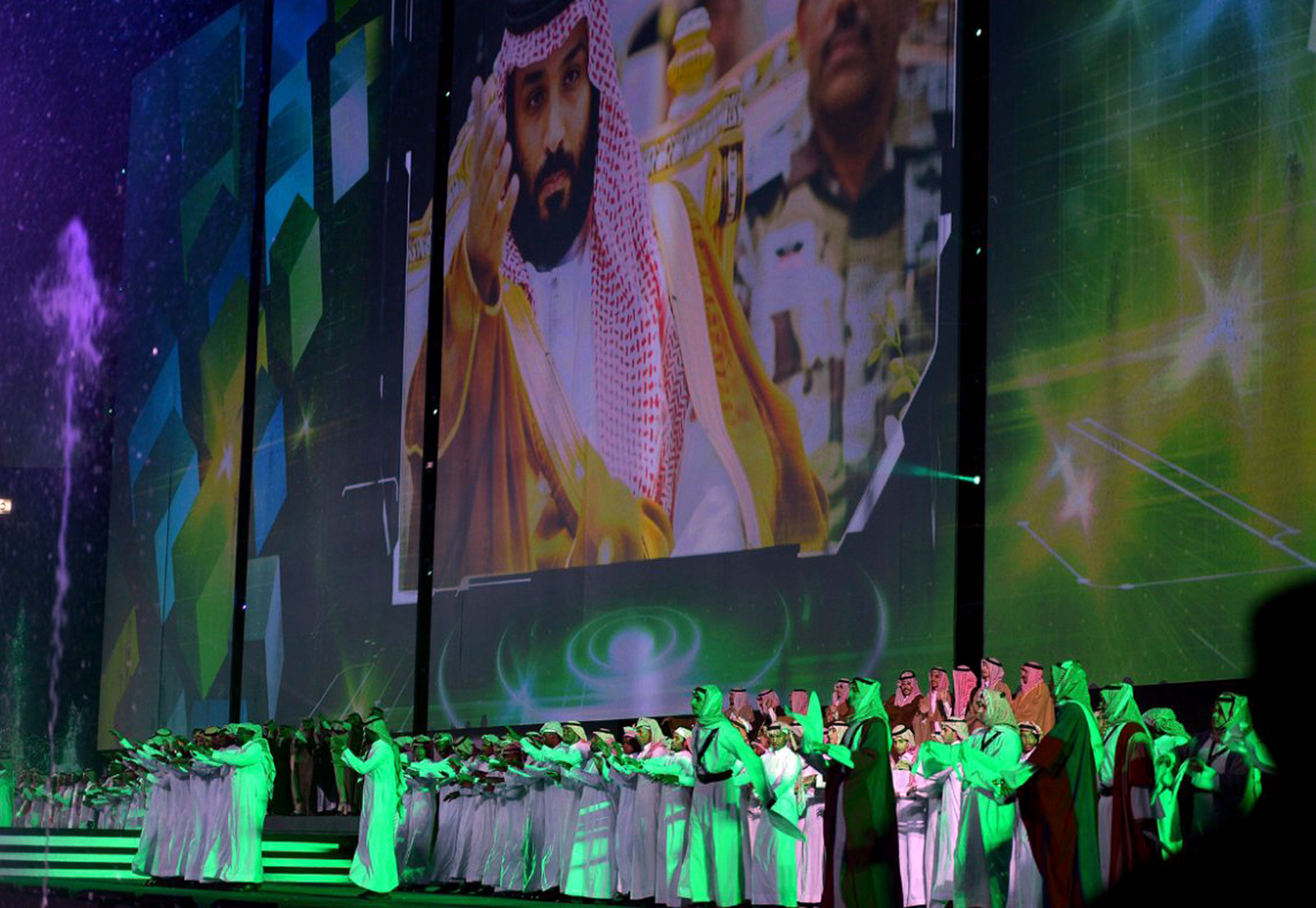RIYADH, SAUDI ARABIA (Analysis) — It’s been nearly two years since Saudi Arabia’s Deputy Crown Prince Mohammed bin Salman (MBS) unveiled his “Saudi Vision 2030” to reduce the Kingdom’s reliance on oil in hopes of reviving its declining economy. The move was undertaken with the goal of transforming Saudi Arabia into an international investment powerhouse through non-oil trade, as the Kingdom’s oil exports reach a record low and U.S. shale producers rise to the top of the oil industry.
The Saudi Kingdom is also promising to begin “restoring Islam to its origins,” which they hope will have an effect on the wider world.
However, with massive neoliberal economic reforms on their way, what remains unclear is how this rush to privatization will affect the general population of a country plagued by record high unemployment, with a quarter of the nation living below the poverty line; increased distrust of the government after years of brutal crackdowns on dissenters; and a dwindling cash supply drained by Riyadh’s aggressive war on Yemen and funding of terror groups.
Nobody can be sure what these changes in Riyadh will mean for the country, the region or the wider world, but the Saudis have made some grandiose promises.
The Saudi Vision sales pitch


Saudi Crown Prince Mohammed bin Salman, center, and Managing Director of the International Monetary Fund Christine Lagarde, left, attend the opening ceremony of Future Investment Initiative Conference in Riyadh, Saudi Arabia, Oct. 24, 2017. (Saudi Press Agency/AP)
MBS has called Saudi Vision 2030 “an ambitious yet achievable blueprint” for moving his country into the future.
A good source for information on Vision 2030 is the official marketing site set up by the Saudi state, in an effort to attract investors and explain this new vision for Saudi society. According to the “open for business” section of the Vision website, this vision will “improve our business environment, restructure our economic cities, create special zones and deregulate the energy market to make it more competitive.”
There’s a lot there to unpack but the most important takeaway is that Riyadh is looking to create a much more business-friendly environment in an attempt to become a major hub for global capital, while also breaking an oil dependency and digging themselves out of a national debt that has increased more than six-fold between 2014 and 2016, possibly leaving them in a position to be bankrupt by 2020 according to the IMF.
One major step towards this goal, which has the Western financial giants cheering, is the plan to sell off major portions of some of the largest companies and utilities in the world.
Some of the major organizations included in this are the Saudi state airline, the Sadara Chemical Corp., the Saudi Postal Corp. — and, of course, the state oil company, Aramco. Investors are also being sought to privatize large percentages of government sectors such as healthcare and education.
There are also plans for the creation of new cities that will be designated “special economic zones,” which will operate under unique laws meant to protect capital. The construction of these new cities is intended to draw foreign investment away from other regional financial hubs like Doha or Dubai, and is already being financed by corporations from countries such as Israel.
According to the text of Vision 2030, all of these economic reforms are meant to “further enhance our financial resources and economic stability,” while also creating a “vibrant culture” within the kingdom.
The goal of this vibrant culture goes beyond the privatization of the Saudi economy and bolstering of domestic production capabilities to also address legal traditions in the kingdom, which are based on the strict Wahhabi interpretation of Islam. These reforms are meant to make the kingdom “more inclusive” for all of its citizens, including groups that suffer from discrimination, such as Shia Muslims and women.
While a lot of these reforms and promises of change may sound appealing, even Saudi cheerleaders in the West, such as the New York Times’ Thomas Friedman admit it is going to be hard to pull off. Even Friedman, who has blindly advocated other “pushes for modernity” such as the invasion of Iraq, does admit MBS “has his flaws,” such as “relying on a very tight circle of advisers who don’t always challenge him sufficiently, and a tendency to start too many things that don’t get finished.”
The new vision of Saudi Arabia is clearly ambitious, and the path is going to be full of obstacles both at home and abroad.
Privatization will upend the Saudi lifestyle


Saudi women look at jewelry at a gold fair in Riyadh, Saudi Arabia. (AP/Hassan Ammar)
To better understand the privatization plan that is part of Vision 2030, first it is key to understand the reason for the urgency to make such massive changes so fast.
It is likely that the rapid pace set for the Saudi reforms derives from concerns about a possible backlash against taking resources out of the notoriously corrupt government’s control. As an example, one only has to point to the corruption sweep that occurred last month, where hundreds of high-ranking Saudi citizens and officials were swiftly arrested before any particular faction in the government could muster any kind of resistance.
This corruption raid illustrates the speed at which the Saudis plan to work when it comes to dealing with other big players who could challenge the reign of MBS; but what about the average Saudi? They may not have billions to lose like some of those who ended up imprisoned in the Riyadh Ritz Carlton, but they do still benefit from the government control of resources by living thoroughly subsidized lives, benefiting from policies like price controls on gas and energy
Historically, it has been Saudi oil sales that financed these perks to their citizens — which have been deemed unsustainable by economists for years — but now this system is under even more stress by virtue of the current downward trend oil prices. While some financial speculators are still hopeful oil prices will rise again in the future, others, such as energy consultants Bernhard Hartmann and Saji Sam, contend that “today’s oil prices that we think of as low are actually near the real average price of a barrel of oil for the last 150 years: $35.”
Hartmann and Sam believe “we have entered a new normal of lower oil prices,” a sentiment that it seems Riyadh views as a real possibility. Yet oil is still expected to comprise over 60 percent of the Saudi government budget this year, a fact that is likely driving the Saudis’ rush to reform in the next few years rather than decades.
Actually making these changes, however, gets extremely complicated and will need to be enacted with a seldom seen degree of perfection by the government. These challenges in implementing Vision 2030 have already been observed, albeit on a small scale compared to what the future may hold.
One example of the nature of possible future challenges, which has already occurred several times this year, was the news that Riyadh was contemplating cutting the aforementioned oil subsidies by almost 80 percent. While there have already been some moderate price hikes on oil, and despite the Saudi’s desperate need for increased revenue, this larger shift still has no official start date and price increases have previously been frozen and delayed in fear they could cause an even more painful economic slowdown.
Issues like this are not just likely to continue coming up, but will likely occur at a higher frequency and be more severe, unpopular, and complex as the Saudis prepare to reduce spending through an austerity agenda.
If past rapid leaps by countries with large government apparatuses into neoliberal economies serve as a guide (think Russia in the early 1990’s), the combination of austerity and privatization could lead to economic catastrophe and end up harming the country much like was seen during the economic catastrophe and subsequent privatization and austerity in Greece.
It’s these uncertainties that highlight just how ambitious Vision 2030 is, but these risks get even higher when you take into account factors like the estimated 25 percent of the population living below the poverty line in a country where wages have been declining for years. If the Saudis are to be believed, they’re currently working on these problems by ‘creating jobs and reforming education’ and widening the labor pool by allowing women to work.
Despit these attempted preemptive measures, it has been pointed out by analysts that the unemployment rate of Saudi nationals continues to climb, hitting 12.7 percent earlier this year.
This unemployment rate may be acceptable to the Saudis and their backers for now, in light of the changes underway, but it still obscures the bigger picture since this number accounts only for Saudis who are actively seeking work. Even though economists do use unemployment numbers as one method of measuring economies, this rate doesn’t account for a country’s total population, including those who have dropped out of the workforce entirely, which is why experts also measure things like the percentage of the population that is active in the labor market.
This is what is known as a labor participation rate, which has remained at a very low 53 to 55 percent in Saudi Arabia since 2013.
Another potentially critical problem in Saudi Arabia is a dilemma that has plagued monarchies for centuries: land ownership. Like any autocratic government, the Saudis have for decades been consolidating valuable real estate and concentrated ownership in a small circle of elites. This, of course, leads to a situation of low rates of property ownership in the kingdom and rapid increases in rent costs. There is currently some restructuring of financial rules underway in an attempt to reverse this trend, although there are still concerns that the Saudi construction market isn’t even meeting the current demand for housing.
In these times of austerity, it makes sense that one of the Crown Prince’s top priorities is instituting changes to try to make more of his subjects feel as if they have a stake in Saudi society. Much as with the plans of Ronald Reagan or Margaret Thatcher, MBS seeks to “create stakeholders” in his country’s economic system by tying their fates to those of the Western capital that will soon be pouring in. While nobody is necessarily excited about the current economy in Saudi Arabia, it’s next stage of development is unlikely to be celebrated once the average Saudi gets a taste of the Clintonite End of History “shock therapy,” which devastated the members of the former Soviet Union with a similar brand of austerity and rapid privatization.
Making this next step a bigger hurdle is the fact that MBS has to make this transition in an age of globalization of both economic rules and the access to information. With around 60 percent of the kingdom’s population under the age of 30, and with the historically closed society opening rapidly, this presents a host of unique challenges to the old-guard of the Saudi society.
A major part of the reforms that will be necessary to help move these segments of society more into line with Vision 2030 is also likely to anger some of that old-guard (many of whom were guests of the Ritz Carlton). These more conservative elements at home are likely to be more upset about the economic changes, such as their assets being seized to balance budgets, than about religious changes.
The Saudi youth, on the other hand, will also likely be upset with the upcoming economic reforms, but they are likely to welcome a relaxation of the strict religious laws in the country. The challenge for Riyadh in reforming their religious doctrines will come as they attempt to balance this new version of Wahhabism at home with their policy of spreading it abroad.
MBS’s ‘restoration of Islam’ and the new Saudi foreign policy


Former Saudi militant, 30-year-old Badr al-Enezi, stands in the courtyard of the Mohammed bin Nayef Center for Advice, Counseling and Care, a rehab center which aims to reform militants in Riyadh, Saudi Arabia. (AP/Hasan Jamali)
While the young people of Saudi Arabia will likely be enjoying more liberty at home, MBS does not intend to stop there and instead claims he is now committed to wiping “all terrorists off the face of the earth” — the same terrorists the Saudi Kingdom has been financing for years. Now, this may sound like the same promise Saudi royals have been making for decades, but this time it does seem MBS is making some changes to the harshest religious laws at home
The real question, however, is how he plans to put the lid back on the pandora’s box of global Wahhabi terror. The Saudis have relied on extremist proxies for several decades, which they are now attempting to clean up through new state bodies slated to be the “authorities on Islam” and re-education centers for militants. It remains to be seen (although likely) whether it is too late to implement programs like this, after recent years of heavy investment in terror proxies under the Clinton, Bush and Obama administrations, most recently following the Arab Spring.
Former President Barack Obama was in favor of the Arab Spring and approved most armed proxies, like Al-Qaeda, that shared interests with the Saudis operating in countries like Libya and Syria. But even Obama would not give the Saudis carte blanche to destabilize the Middle East in an attempt to hit Riyadh’s main target, Iran. Obama operated on some basis of reality in regards to Iran, working to craft the Nuclear Deal as the Saudis remained committed to undercutting rapprochement
As the conflict in Syria dwindles down and U.S.- and Saudi-backed proxies are defeated by Syrian allies like Russia and Iran, the Saudis are becoming more aggressive in the war in Yemen — with the Trump administration showing the Kingdom new levels of support. This support was laid bare during the President’s first trip abroad to Riyadh, where he delivered a speech blaming Iran for all the world’s tragedies. MBS feels so strongly about Trump as a key ally that he says Washington is now crucial to helping him execute his plans and that the President, in particular, is “the right person at the right time.”
With this blanket approval from Washington for any decision made by Riyadh, the Saudis have now begun trying their hand at a new style of foreign policy, more in line with what you’d expect from a Western nation — despite having already tried this more blatant approach in Yemen and having a war they expected to last six months extending almost three years.
With full endorsement by Trump, and learning no lessons from Yemen (a war that leaked MBS emails show he wants out of), Riyadh’s first attempt to use these new tactics was its blockade of neighboring Qatar. This new public airing of grievances by the Saudis was a diversion from their normal path of trying to resolve these types of crises in private or just sponsoring coups or proxies.
However, even with the public endorsement of this move by President Trump, it still backfired on the Saudis and resulted in the exact opposite of the desired result. Instead of Qatar capitulating due to its perceived dependence on its neighbors, Doha resolved the blockade by finding allies in Ankara and Tehran. The latest developments in this failed Saudi plan have seen Qatar now signing unprecedented trade agreements with these two Saudi rivals to offset the ongoing blockade.
Similar to the failure in Qatar are the recent Saudi machinations that took place in Lebanon, where, in an attempt to fracture the coalition government, Lebanese Prime Minister (and Saudi citizen) Saad Hariri suddenly resigned while on a visit to Riyadh. This surprise resignation was then used by both Israel and Saudi Arabia in an attempt to divide Lebanon and further demonize Iran by blaming Hezbollah for Hariri’s flight to Riyadh.
This plan, just like the plan for Qatar, almost immediately fell apart, resulting in all of the factions of the Lebanese government uniting in their demand for the return of Hariri. This also ended up having a negative effect on Saudi-Lebanese relations, with most people in Lebanon angry at the Saudis for interfering in their internal affairs, rather than turning on Iran as MBS had hoped.
The unclear future of Vision 2030


Saudi men perform under a giant screen showing an image of Saudi Crown Prince Mohammed Bin Salman during National Day ceremonies, at the King Fahd Stadium in Riyadh, Saudi Arabia. Saudi Arabia announced on Monday, Dec. 11, 2017 it will allow movie theaters to open in the conservative kingdom next year, for the first time in more than 35 years, in the latest social push by the country’s crown prince, Sept. 23, 2017. (Saudi Press Agency via AP)
If there’s anything that can be taken from the combination of these cultural and economic changes underway in Saudi Arabia, it is that, besides the domestic reform of religious laws, things don’t seem to be going well.
Economically speaking, the people of Saudi Arabia haven’t even begun to feel the effects of the upcoming neoliberal market reforms. There is still the problem of the over-dependence on oil, to a point where plans to move away from it may not be enacted fast enough.
While the Saudis do have some plans to curb their domestic use of oil, they still depend on export sales to cover around 90 percent of their government budget, while accruing unsustainable amounts of national debt. With Saudi investments that span the globe, shockwaves from any financial failures are likely to also have repercussions that could damage major world economies.
MBS also aims to create more stakeholders in an economy that, at the end of the day, will remain under the total control of royalist elements. The plans for Vision 2030 may have all the usual language about making a more fair economy, but so far there are no signs that this attitude will apply to the rights of Saudi citizens in regard to choosing their political future.
When it comes to the new foreign policy directions that are woven into Vision 2030, as explained above, these also seem to be failing. While nobody would argue that the Saudi strategy of arming extremists across the globe was helping anything, it is clear now that the Saudis don’t have the weight to directly push around other regional powers. While Riyadh is seemingly trying to convince the U.S. and Israel to help them carry out some of these new strategies, both of these countries have shown little interest in sacrificing their interests for those of the Crown Prince.
The pro-Saudi media isn’t lying when they say Vision 2030 is an ambitious plan, but they fail to explain just how high the stakes of success are for them. While Vision 2030 is a truly massive reform plan, it remains to be seen whether it will be able to walk the very fine line between complete success or total disaster — either way, the next few years in Saudi Arabia are guaranteed to have profound effects on the Middle East and the wider world.
Top photo | Saudi Crown Prince Mohammed bin Salman arrives for a press conference in Riyadh, on April 25, 2016. (Saudi Press Agency)
Jim Carey is an editor at Geopolitics Alert. He covers the Middle East and Eurasian affairs.
<!–
–>
Source Article from http://www.mintpressnews.com/saudi-arabias-vision-2030-crown-prince-bin-salmans-high-risk-privatization-plan/235487/
 RSS Feed
RSS Feed















 December 13th, 2017
December 13th, 2017  Awake Goy
Awake Goy 
 Posted in
Posted in  Tags:
Tags: 













